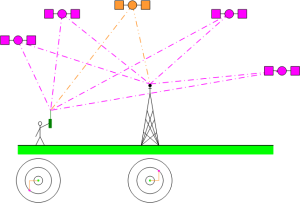Recently I’ve had several conversations about using ICT investment to improve government productivity. To me, these are dead-end conversations, here’s why…
First we try to define “What is productivity”?
Most people best understand productivity in terms of making a product. Productivity is output of an aspect of production, per unit of input. To be more productive, you produce a unit at lower cost.
Productivity can be modified using a variety of potential solutions:
- Increase income/profitability
- Increase price
- Increase sales
- Increase market share
- Reduce production costs
- Decrease quality
- Decrease quantity/supply
- Decrease material costs
- Decrease labour costs
- Increase non-monetary compensation
- Employ volunteers
- Convert to online/digital goods
- Stop the activity
- Make someone else responsible for the activity
Then we define “government productivity”
Not all the potential solutions are applicable to governments, as they don’t make many products. They provide public services, which creates different productivity challenges to the private sector. Baumol’s cost disease is often used to explain the perceived lack of growth in productivity in public services.
Government productivity is not just about the cost of production of government services. People use government services and the time they spend interacting is a burden on their personal productivity.
The scope of government productivity therefore has at least two aspects:
- Increasing government productivity — improving operational efficiency and effectiveness reduces cost of government services.
- Increasing people productivity — allowing people to interact with efficient and effective government services, makes them more productive
E-government strategy and productivity
If you review e-government strategies, you’ll find these productivity aspects in various guises. For example, the Australian Government ICT strategy specifically talks about investment in ICT to reduce the compliance burden and increase broader economic growth.
As a side-note, e-government strategies may also cover other important objectives that can be achieved through ICT investment, such as:
- increasing trust / confidence (the basis of democratic power)
- increasing value (the public service is given use of public assets, to generate public value)
- increasing future opportunity (ensuring the long term viability of public services)
- reduce risk (managing likely threats to productivity, trust, value; either immediate or in the foreseeable future)
I would suggest that these objectives have an indirect influence on productivity.
The productivity dead-end
The concern I have, is that this current strategic thinking is actually old thinking. This is the same “lower cost input” message / thinking that I helped work on with the NZ government, over 10 years ago. As a strategy, if you extrapolate it out, you find there’s a dead-end at the end of it — over time you have to spend more to save less (diminishing returns).
Who remembers the typing pool of 25 years ago? Many public administration activities that were once heavily labor-intensive have already realised the major productivity gain, through investment in ICT. We’ve already moved from the low hanging fruit, to spending more money to reach the fruit in the middle of the tree. At the same time, we must continue to refresh our existing ICT investments to maintain previous productivity gains.
Our strategy of “improving productivity with ICT” that we have employed for the last 25 years, is starting to run out of steam. When you hear “productivity”, you are having a diminishing value conversation about “cost”.
What comes next?
The logical question is “what comes next?” I don’t pretend to know the answer, but if government accepts that its services have a part to play in broader economic activity, then I suspect it has something to do with information value chains.






